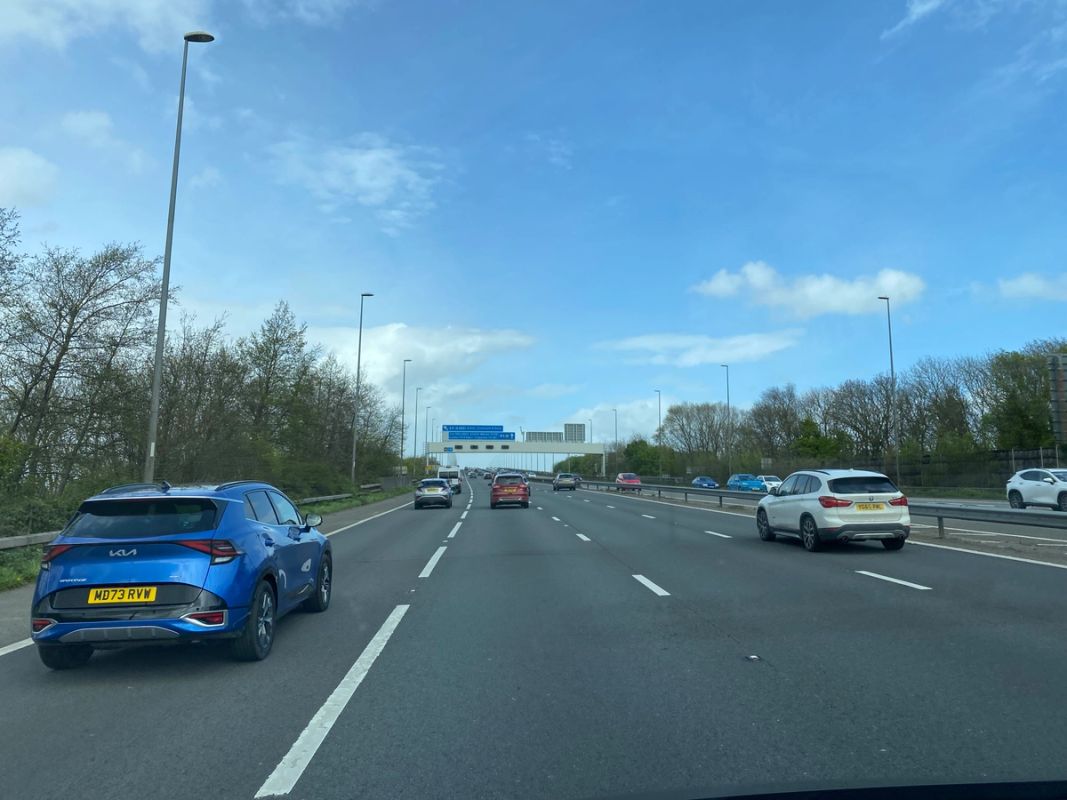Autobahn vs Motorway
Making the comparison between unrestricted autobahns and UK motorways
Every so often, a story breaks that reminds us how different driving cultures can be. Recently, headlines were when yet a driver was prosecuted for hitting 199mph on an 120kph (74mph) stretch of Autobahn.
It’s the kind of feat that grabs attention worldwide – but it also sparks debate. Should roads ever be without speed limits? Could the UK ever tolerate such an approach? And more importantly, what lessons can British drivers take from Germany’s philosophy of high-speed motoring?
At Driving Masters, we love exploring these questions. Because while the Autobahn might feel like a world away from our 70mph motorways, it provides fascinating insight into how advanced driving skills, road design, and driver attitudes intersect to make speed safe – or unsafe.
Why Germany Allows ‘No Limit’ Roads
The Autobahn has legendary status for a reason. Somewhere between 50 and 70% of Germany’s motorway network has no official speed limit, though recommended guidance is set at 130 km/h (81mph). Drivers are expected to self-regulate – an approach that would seem unthinkable in the UK, where limits are firmly enforced with cameras and penalties.
The German philosophy rests on three key pillars: road quality, vehicle standards, and driver discipline. Their motorways are engineered to a higher specification than most UK roads, with straighter alignments, smoother surfaces, and extensive maintenance. Cars undergo strict TÜV inspections, ensuring they’re capable of handling high-speed stress. And drivers, crucially, are trained to a higher baseline standard before gaining a licence.
This combination doesn’t eliminate accidents, but it makes unlimited speed sections viable in a way they never could be on Britain’s more crowded, narrower motorway network.
UK Motorways: A Different Mindset
Here in Britain, the national speed limit on motorways has been fixed at 70mph since 1965 – a figure that feels increasingly at odds with modern car technology. Today’s vehicles stop shorter, accelerate quicker, and come equipped with safety systems like ESP, ABS, lane-keeping assist, and adaptive cruise control. Yet despite this progress, the UK has resisted calls to raise limits.
Why? Because it’s not just about what the car can do – it’s about what the driver can handle. Advanced driving isn’t widespread here, and with congestion levels far higher than on the German Autobahn, most UK drivers wouldn’t safely manage higher speeds, no matter how confident they are!
The Role of Advanced Driving at Speed
High-speed driving shouldn't be about thrill-seeking or risk taking, it about skill. On an unrestricted Autobahn, every lane change, every overtake, every glance in the mirror matters more. Drivers must read the road far ahead, anticipate hazards, and flow smoothly with traffic.
When we work with drivers on motorway training, we train then to gather and process information at pace, to make deliberate choices about speed and positioning, and to maintain absolute control under pressure. This isn’t just useful on an Autobahn – it’s essential for safe motorway driving in the UK too.
Topics such as vehicle stability, overtaking techniques, and hazard anticipation are drilled until they become second nature. Because whether you’re overtaking a lorry at 70mph on the M1 or holding 120mph on the A9 outside Munich, the mindset and techniques required are strikingly similar.
Comparing Autobahn Risks with UK Motorways
One of the big myths about the Autobahn is that it’s a free-for-all. In reality, discipline is far greater than on UK motorways. Tailgating, hogging the middle lane, or failing to indicate are heavily penalised, and drivers are socially conditioned to show lane discipline. Contrast that with the UK, where lane hogging and poor observation are everyday frustrations.
Still, Germany’s system comes with risks. High closing speeds mean that if something goes wrong, the consequences are severe. That’s why advanced observation and anticipation matter more than anywhere else. For example, spotting the limit point on a bend or understanding how vehicle stability changes under braking at high speed can mean the difference between a safe manoeuvre and a catastrophic incident.
UK drivers often underestimate the dangers closer to home. Sharing the motorway with HGVs is a far greater risk factor than top speed alone – and we’ve explored those dangers in depth on our dangers of HGVs blog. Pair that with the challenges of fatigue, weather, and congestion, and it’s clear why simply raising the speed limit here wouldn’t automatically make sense.
What UK Drivers Can Learn from the Autobahn
So, could Britain ever embrace higher limits? Probably not wholesale. But there are still valuable lessons UK drivers can take from Germany:
- Lane discipline matters. The left lane is for cruising, the right for overtaking. Stick to it.
- Vehicle preparation is key. Tyre pressures, brake health, and correct seating position matter far more at high speeds.
- Advanced observation keeps you safe. Reading traffic far ahead, not just the car in front, gives you more time to act.
- Mindset changes everything. Treat driving as a deliberate skill, not a background activity, and you’ll be safer at any speed.
f the Autobahn proves anything, it’s that safe high-speed driving is possible, but only when supported by training, discipline, and the right mindset. For UK drivers, the real takeaway isn’t “drive faster” but “drive better.” That’s where advanced coaching makes all the difference.
August 2025
FAQs
« Back to Blog

